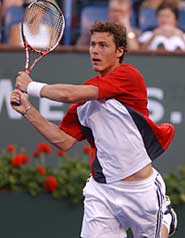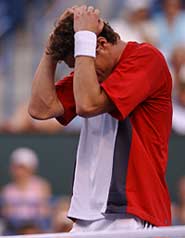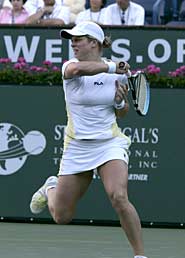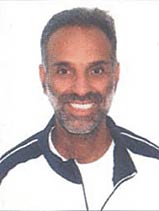|
TennisOne Lessons


Emotion and Pumping Oneself Up
Happy Bhalla
It is always better to deal with what is, rather than try and hide one’s true feelings. If fear and doubt exist, it is better to look into these feelings and acknowledge them. Freedom from these emotions can only come from acknowledgement and an increased awareness of what they are; how they feel and where they come from.
It is time to put to bed the rah-rah approach to dealing with the mind in sports. The idea that if we shout things loud enough, they somehow will happen, is simply untrue. This is especially the case in tennis where there is so much time, not only between points and games, but also between shots - yes, even at the highest level.
In addition, tennis is a highly skill intensive game and the reliance on emotion is a double-edged sword. Emotions can lead to powerful highs and weakening lows; highs when much can be accomplished and lows when nothing seems to go right. This is how energy works.
There are two questions to be considered here. First of all, is it better to play with or without emotion? And secondly, is it even possible to play without emotion and how can that be done?
  Emotional players like Safin can be unbeatable at times but they can also sink very low.
Emotional players like Safin can be unbeatable at times but they can also sink very low. |
I have clearly stated that it is better to remain balanced, calm and centered in order to produce your best tennis. Emotional highs and lows will lead to inconsistent tennis; an ill many tennis players suffer from.
In my understanding, every player has a range in which they play; a top end when they play their best and a bottom end when their play their worst. Since physical skills do not vary a great deal from day to day, it is likely that the single most important determining factor in this variation is mental. This mental variation is entirely based on these emotional highs and lows that players experience. Most of the top players understand this and consequently will instinctively avoid drama by remaining balanced. However, there are players who seem to feed off emotion and these players could find themselves mentally exhausted after some time, when burn-out could happen.
If we are now convinced that a state of equanimity is the ideal mental state for peak athletic performance, the next question becomes, is it possible for humans to play like "robots" and how can it be done.
To equate emotions with being human and a quiet centeredness with being machine-like is a mistake. Certainly, most people (the majority) feel emotional ups and downs depending on whether they get what they want or not. However, the enlightened individual (the minority) can aspire to greater heights. The deeper the understanding one has of winning and losing, success and failure and the greater awareness one has of what is important and what is not, emotions automatically loosen their grip.
   Players like Federer, Clijsters, and Agassi, who play within a narrower range of emotion seem to play with more consistency.
Players like Federer, Clijsters, and Agassi, who play within a narrower range of emotion seem to play with more consistency.
|
Emotions are caused by attachment and as one’s awareness increases, detachment automatically decreases and as this happens emotions become less powerful. Whether they disappear completely or not is irrelevant. Certainly, they will have less of a grip on the individual and consequently peak athletic performance will be easier to access.
Is it possible to become more detached? Certainly it is! Attachment is formed through misunderstanding. As we looker deeper into our attachments and reflect upon them, we will discover that they are based on false beliefs and expectations. As we become more and more aware of these false beliefs and expectations our attachment will inevitably begin to fall away. As the false disappears, the real becomes visible and as attachment disappears, detachment becomes our natural state. It is not about doing something, it is just to see the false as the false.

 Happy Bhalla has a Masters Degree in Philosophy and Religion and has been teaching tennis for over 30 years.He has written two books and many articles over the past 10 years on the role of the mind in both the learning process and in the competitive experience. Happy Bhalla has a Masters Degree in Philosophy and Religion and has been teaching tennis for over 30 years.He has written two books and many articles over the past 10 years on the role of the mind in both the learning process and in the competitive experience.
His teaching style attempts to view students as Holistic individuals, rather than “just” tennis players.It combines his two loves. Spirituality: living with awareness; and Tennis: the pursuit of excellence. He believes “tennis is the language by which we can teach and learn deeper values, provide wider perspectives and ultimately bring a joy and peacefulness, under all circumstances, that far transcends the temporary satisfaction that winning provides.”
He can be reached at: happybhalla@hotmail.com or www.wholistictennis.com
|
|






 Happy Bhalla has a Masters Degree in Philosophy and Religion and has been teaching tennis for over 30 years.He has written two books and many articles over the past 10 years on the role of the mind in both the learning process and in the competitive experience.
Happy Bhalla has a Masters Degree in Philosophy and Religion and has been teaching tennis for over 30 years.He has written two books and many articles over the past 10 years on the role of the mind in both the learning process and in the competitive experience.